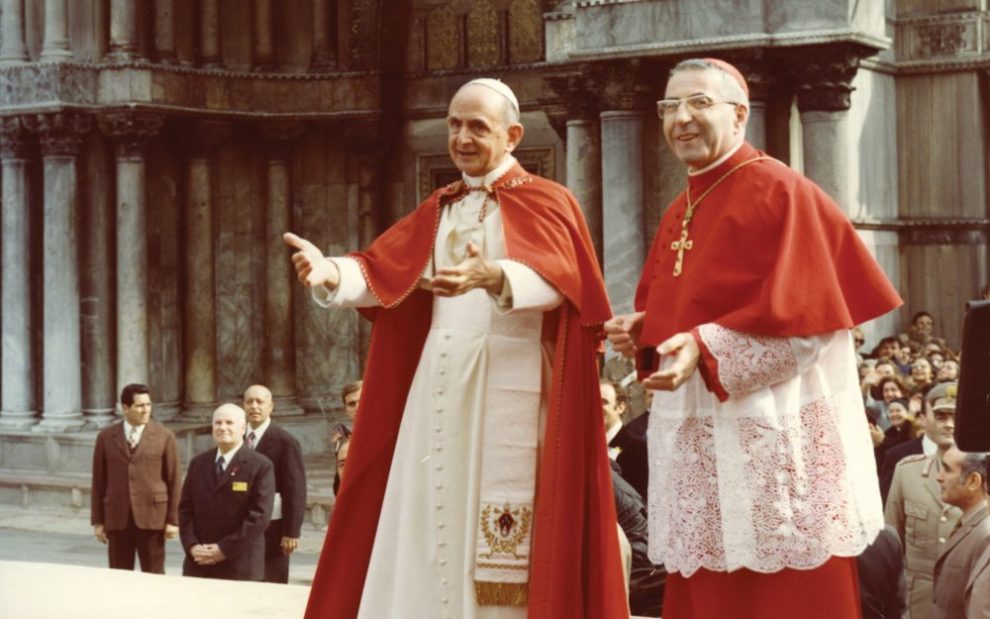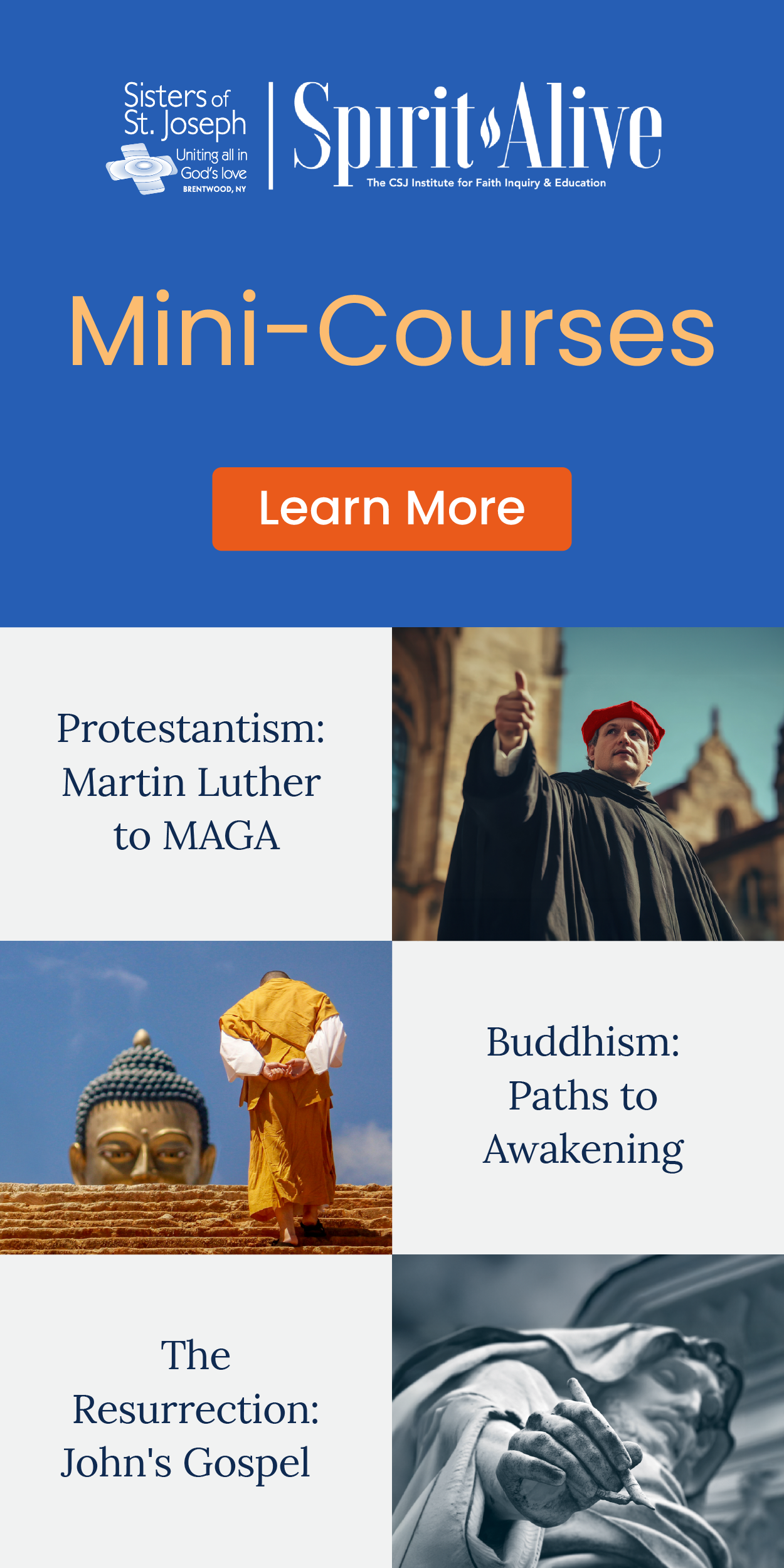People say you never forget a first impression, but I honestly couldn’t tell you my first impression of St. Pope Paul VI. At first, I suppose, Paul VI was just another Roman numeral hanging on the 5-square-foot chart of 265 pontiffs that hung in our family computer room. Many Catholics may have come to know Paul VI as the author of Humanae Vitae (On Human Life), perhaps the most hated and misunderstood encyclical. Paul VI, whatever his humble beginnings in my own faith life, has become an indispensable patron saint for living the Christian life in a divided church and world. A leader who made revolutionary ecumenical gestures, Paul VI has become, for me, a treasured fellow pilgrim on the journey of Christian unity.
Paul VI was born Giovanni Battista Montini in a small village outside Brescia in Northern Italy on September 26, 1897. Montini entered seminary in 1916, was ordained four years later, and moved to Rome to study canon law. In 1922, he began working for the Vatican secretary of state; he worked for the Vatican Curia for most of his career. During the difficult years of World War II, he was Pius XII’s most trusted righthand man.
In 1954, nearly a decade after World War II ended, Montini was consecrated Archbishop of Milan, near his hometown in Northern Italy. As archbishop, Montini supported Northern Italy’s strong tradition of cooperatives and labor organizers. He visited Communist neighborhoods, bringing his Mass kit—along with a hard hat—to factories and mines. He took to heart his own words about the priesthood, written in 1954: “The priest has to listen to sirens from the factories, these temples of technology where the modern world vibrates.”
Over the decade of his episcopacy in Milan, Montini made the city a center for ecumenism. He met with Anglican representatives and urged love for people of other faiths, whose religions, he said, contained “seeds of the Word.”
The year before he was appointed the Archbishop of Milan, Montini declined the honor of becoming a cardinal at Pius XII’s final consistory. After Pius’ death, John XXIII—a “compromise candidate” among divided church factions—was elected in 1958 and soon appointed his good friend Montini as a cardinal. Like Montini, John XXIII longed to unite East and West—so the church might “breathe with both lungs” again.
As Europe healed from World War II, peace still seemed far off. John XXIII felt strongly that it was time for an ecumenical council to address this new modern world. On January 25, 1959, he shocked the world by announcing an ecumenical council at the Vatican. In his preparations for the council, John XXIII created the Secretariat for Promoting Christian Unity so that the non-Catholic Christians he loved so dearly might join them in Rome. John XXIII died after the first session of the Second Vatican Council, in the summer of 1963.
Montini was elected Pope Paul VI with just a hundred days to prepare for the beginning of the second session of the council.
At its opening on September 29, 1963, Paul VI directly addressed the non-Catholic observers: “We are pleased to greet them heartily,” he said, addressing the observers in the royal first-person plural. “We thank them for having come.”
The pope went on to say: “Our voice trembles, Our heart beats, because just as their present closeness causes Us indescribable comfort and sweetest hope, so their long-lasting separation bitterly saddens Our soul. If any fault must be recognized in Us for this separation, with humble supplication, We ask pardon of God, and We ask pardon of those Brothers if they believe they have been offended by Us.” Never before had a pope asked for forgiveness from fellow Christians, especially not those who had so often been condemned as schismatics and heretics.
Paul VI said he was also willing to forgive and forget others who had persecuted Catholics. This was a monumental step toward Christian unity that he followed up the next month at a meeting with the non-Catholic observers.
At that meeting, the observers appointed a Lutheran theologian from Denmark, Kristen Skydsgaard, to speak for them to the pope. Skydsgaard expressed how fruitful their time at the council had been and proposed to Pope Paul VI that he create an institute where Catholics and non-Catholics could gather to continue this shared study of their common Christian history and the sacred scriptures they shared.
“We are on the way together.” —Pope Paul VI
Advertisement
This institute became Tantur Ecumenical Institute, a place that first taught me, through lived experience, the spiritual power of Christian ecumenism—the work for unity. I spent the past several years researching Tantur’s history and writing its story.
Shortly after he met with Skydsgaard and the other observers at the Second Vatican Council, Paul VI arranged a pilgrimage to the Holy Land. Athenagoras, the Ecumenical Patriarch in Istanbul, had also long desired to meet with a pope so they could embrace one another as a step toward unity between East and West, a reversal of the Great Schism of the 11th century. Athenagoras and Paul VI met in Jerusalem as fellow pilgrims. They embraced on the Mount of Olives and prayed together at the Church of the Holy Sepulchre. They exchanged gifts. Athenagoras called Paul VI the “pope with the big heart.”
Pope Paul VI established four institutes in Jerusalem in commemoration of his pilgrimage with Athenagoras: a school for deaf children; a pilgrimage house on the Mount of Olives; Bethlehem University, which had originally been a school run by the Christian Brothers in Bethlehem; and Tantur Ecumenical Institute.
Tantur is on a hilltop off the main road from Jerusalem to Bethlehem. One thing I noticed while studying at Tantur was the continued presence of Paul VI in the cities around it. At the Basilica of the Annunciation in Nazareth, Pope Paul VI is engraved on the doors of the church. Just outside the doors, a statue there commemorates his historic embrace with the Ecumenical Patriarch Athenagoras. And local legend says the hill Jabal Al-Baba (Hill of the Papa) in East Jerusalem, on the road to Bethany, is named after him.
Paul VI felt a special pastoral tenderness for the Christians in the Holy Land. In his 1974 apostolic exhortation Nobis in Animo, the pope addressed the serious challenges Palestinian Christians faced due to the Israeli occupation. Pilgrims to the Holy Land, the pope said, should not enjoy their faith’s physical heritage in the shrines and chapels marking moments in salvation history without considering the plight of the present-day church—“the living stones”—who kept the Christian faith alive in the land of its birth. This community, he said, “has suffered almost innumerable adversities.” In response, he instituted a yearly collection—traditionally taken on Good Friday—to support Christians in Jerusalem.
When Pope Francis opened the synodal way in October 2021, he echoed a frequent catchphrase of Paul VI: “journeying together” or “walking together.” Paul VI told the observers at the Second Vatican Council, “We are on the way together.” Rather than calling for a “return to Rome,” he recognized that all Christians are on pilgrimage together.
In a world of iron rigidity, divisions, and self-certainty, Paul VI reminds Catholics that tenderness costs us nothing, that it will not kill us to open our ears to those who think differently, and that there is no other way forward for us than the way toward unity. To journey toward God is to journey toward our sisters and brothers in Christ. The church’s destination—heaven, where we will be drawn up into the love of God, the unity of Creator, Christ, and Spirit—can only be reached together.
This article also appears in the July 2025 issue of U.S. Catholic (Vol. 90, No. 7, pages 45-46). Click here to subscribe to the magazine.
Image: Wikimedia Commons














Add comment